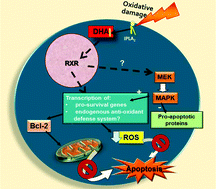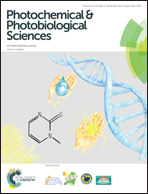Light, lipids and photoreceptor survival: live or let die?
Abstract
Due to its constant exposure to light and its high oxygen consumption the retina is highly sensitive to oxidative damage, which is a common factor in inducing the death of photoreceptors after light damage or in inherited retinal degenerations. The high content of docosahexaenoic acid (DHA), the major polyunsaturated fatty acid in the retina, has been suggested to contribute to this sensitivity. DHA is crucial for developing and preserving normal visual function. However, further roles of DHA in the retina are still controversial. Current data support that it can tilt the scale either towards degeneration or survival of retinal cells. DHA peroxidation products can be deleterious to the retina and might lead to retinal degeneration. However, DHA has also been shown to act as, or to be the source of, a survival molecule that protects photoreceptors and retinal pigment epithelium cells from oxidative damage. We have established that DHA protects photoreceptors from oxidative stress-induced apoptosis and promotes their differentiation in vitro. DHA activates the retinoid X receptor (RXR) and the ERK/MAPK pathway, thus regulating the expression of anti and pro-apoptotic proteins. It also orchestrates a diversity of signaling pathways, modulating enzymatic pathways that control the sphingolipid metabolism and activate antioxidant defense mechanisms to promote photoreceptor survival and development. A deeper comprehension of DHA signaling pathways and context-dependent behavior is required to understand its dual functions in retinal physiology.

- This article is part of the themed collection: The 16th International Congress on Photobiology

 Please wait while we load your content...
Please wait while we load your content...